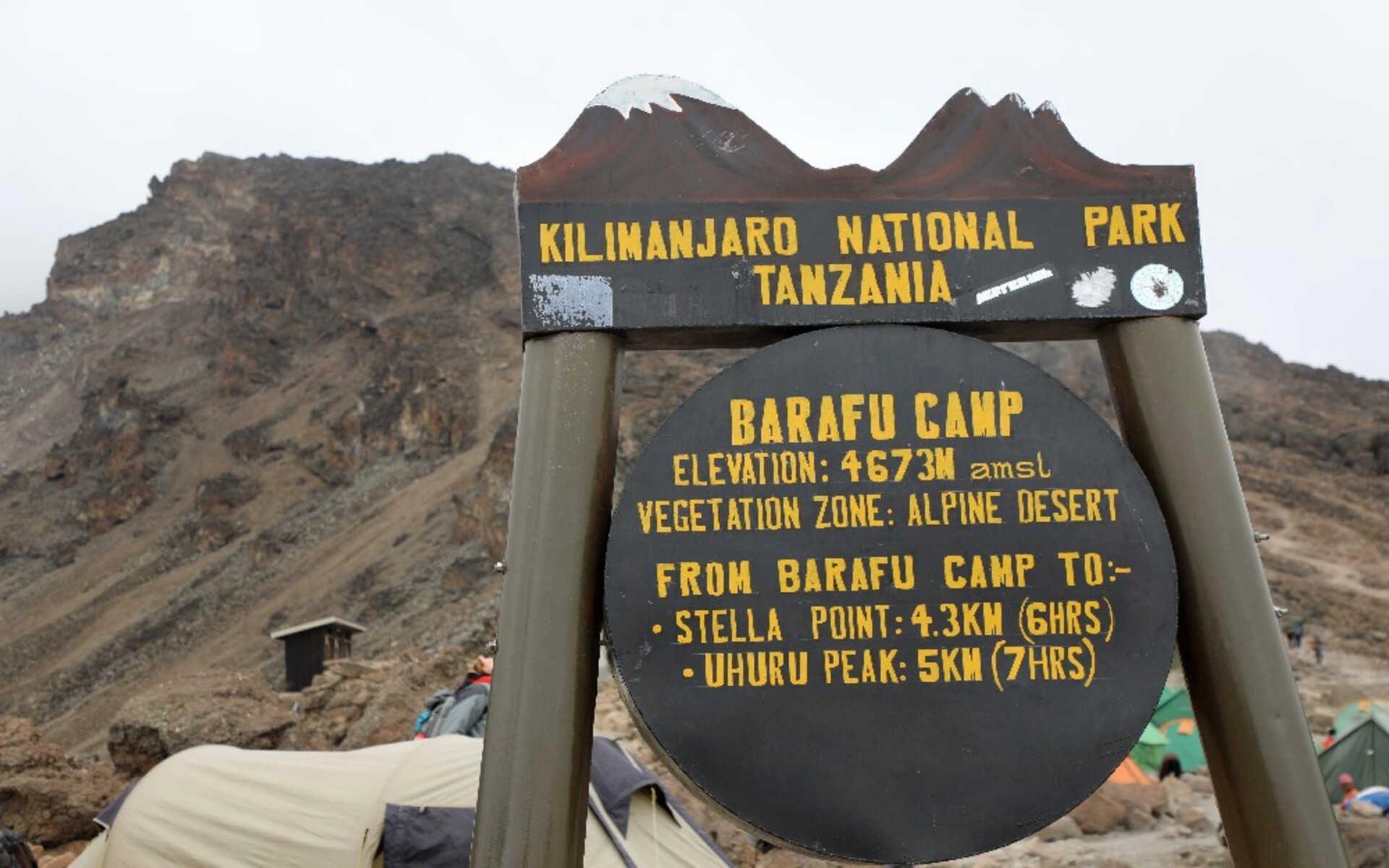Bookings
info@landsmanexperience.com
Arrival Day: Arrival in Arusha/Moshi
Arrive at Kilimanjaro International Airport where you are met after passing through customs. Transfer to your accommodation in Arusha/Moshi and have a comprehensive briefing and equipment check with your climbing manager and your guide.

Trek Day 1: Arusha - Machame Camp
After an early breakfast at your hotel, you will be picked up from Arusha (1400m) and driven to the Machame Gate. After registering at the gate office, you start your ascent and enter the rain forest almost immediately. There is a strong possibility of rain in the forest, which will transform the trail into a very soggy, muddy and slippery experience. You will have a welcome lunch stop about half way and will reach the Machame camping area in the late afternoon.

Trek Day 2: Machame Camp – Shira Camp
After an early morning breakfast, you will start you ascent leaving the rain forest and entering the heathland moorland vegetation. You will cross many streams and walk over a rocky ridge onto the Shira plateau that leads to Shira Camp (3840m). At this campsite, you will be next to a stream and have a spectacular view of the Western Breach and its glaciers in the East. Similar to the first night, your tents will be set up prior to arriving at camp and the porters will prepare drinking and washing water for you. You will enjoy evening snacks then dinner prepared by our chef. Be prepared for a cold night as temperatures drop below freezing at this exposed camp.

Trek Day 3: Shira – Lava Tower – Barranco camp
Following an early morning breakfast, you will leave the moorland environment and enter the semi desert and rocky
landscape. After 5 hours of walking east, you will be come face to face with the Lava Tower (4630m). Packed lunches are served at the Tower and
hikers have the option of climbing the massive Lava Tower weather permitting. At this point of the hike, it is normal for hikers to start feeling
the effects from the altitude including headaches and shortness of breath.
After lunch, you will descend from Lava Tower (4630m) to the Barranco Campsite (3950m). The 680m descent gives hikers a huge advantage to allow
their bodies to adjust to the conditions of high altitude.

Trek Day 4: Barranco Camp – Karanga Camp
After an early morning breakfast, it is now time to conquer the Great Barranco Wall! Although it may look intimating at first glance, hikers state that this Class 2 hike is usually much easier than they anticipated. At the top of the Wall, you will have a view of Heim Glacier and will be above the clouds. The trail then winds up and down in the Karanga Valley. This is an ideal hiking day for acclimatization.

Trek Day 5: Karanga Camp – Barafu Hut
Following breakfast, you will leave Karanga Camp (3959m). The trail intersects with the Mweka Route, which is the trail used to descend on the final two days. As you continue hiking for an hour, you will reach Barafu Hut. This is the last water stop for the porters because there is no accessible water at Barafu Camp (4550m). The word “barafu” in Swahili means “ice” and this camp is located on a rocky, exposed ridge. Tents will be exposed to wind and rocks so it is important for hikers to familiarize themselves with the campsite before dark. An early dinner will be served so hikers can rest before attempting the summit the same night. Your guide will brief you in detail on how to prepare for summit night.Get to sleep by 19:00!

Trek Day 6: Summit Attempt - Barafu camp – Uhuru Peak – Mweka
Your guide will wake you around 23:30. You will then begin your summit attempt. During the ascent, many hikers
feel that this is the most mentally and physically challenging part of the climb. You will reach Stella Point (5685m),
located on the crater rim. After enjoying the magnificent sunrise, you will continue ascending on a snow-covered trail
to Uhuru Peak (5895m). Reaching the summit of Mt. Kilimanjaro is a lifetime accomplishment! You will be able to spend a short time on the
summit taking photographs before the descent to Barafu begins.
At camp, you will rest and enjoy a hot lunch. After eating, you will continue descending down to Mweka Hut (3100m). Mweka Camp is located in
the upper rain forest, so fog and rain should be expected. You will have a dinner, wash, and rest soundly at camp.

Trek Day 7: Mweka camp – Mweka Gate
Following a well-deserved breakfast, your staff will have a big celebration full of dancing and singing. It is here on the mountain that you will present your tips to the guide, assistant guides, chef(s), and porters. After celebrating, you will descend for three hours back to Mweka Gate. The National Park requires all hikers to sign their names to receive certificates of completion. Hikers who reached Stella Point (5685m) receive green certificates and hikers who reached Uhuru Peak (5895m) receive gold certificates. After receiving certificates, you will drive back to your hotel in Arusha/Moshi
Inclusion
-
Quality, waterproof, four-season private mountain sleeping tents
-
Professional, experienced, mountain guides
-
All Park fees, Airport transfers & Rescue fees
-
All meals while on the Mountain
-
Guides, Porters, cook salaries and park fees
-
Clean, purified drinking water
-
Medical Kit
Exclusion
-
Visa entry fees currently at $50pp easily obtainable upon arrival at the border entry point
-
International & domestic airfare & flights Travel insurance
-
Travel insurance
-
Gratuities to Safari guides & hotel staff
-
Any other item which is not mentioned in the “Inclusions” clause above